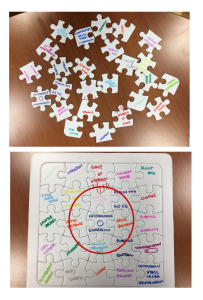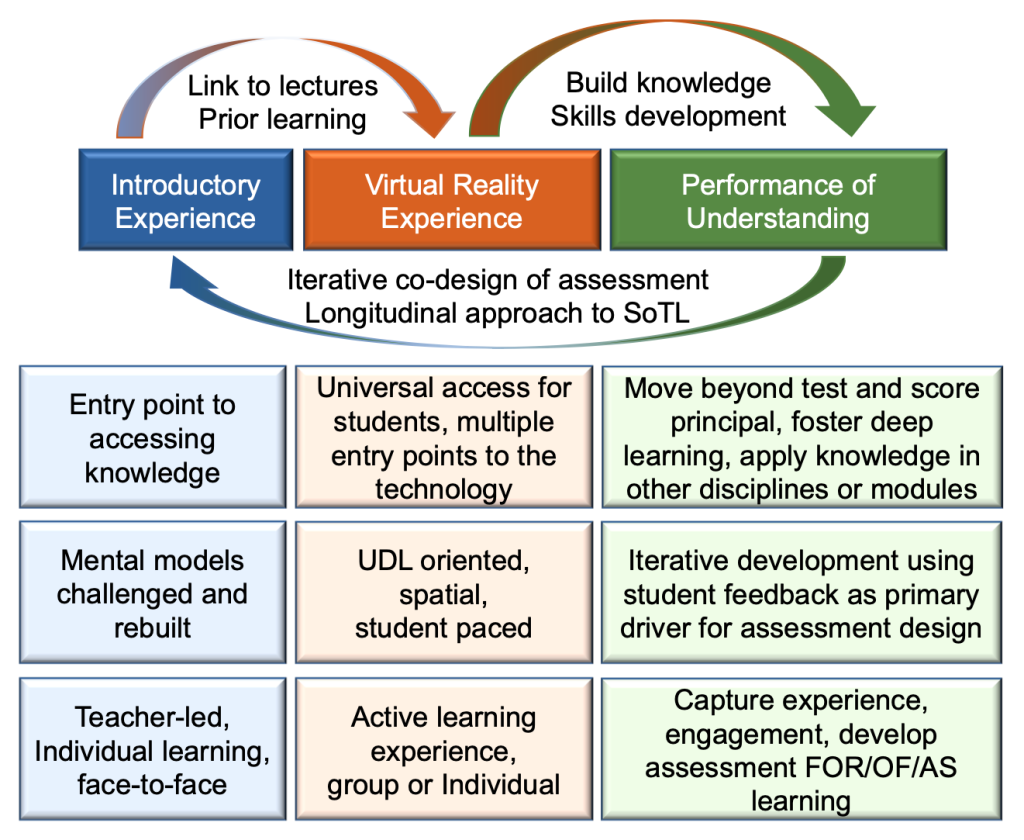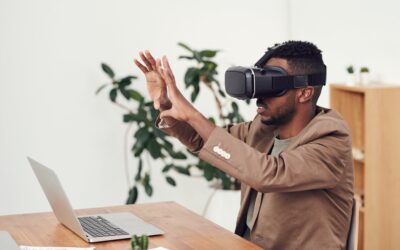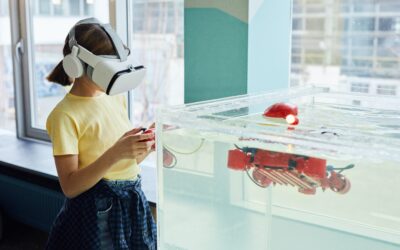On November 18th, 2021, our member David Murphy and his colleague Dr. Jerry Reen presented their project ELEVATE to the XR ERA community. The meetup took place online and consisted of a presentation followed by a Q&A session.
About the Presenters
David Murphy is a Lecturer at University College Cork, Ireland. His research mainly focuses on Virtual Reality/Mixed Reality, Interactive 3D Simulation, Serious Games, Cognitive Ergonomics, and Spatial Sound. He is the founder and Director of the MAVRIC (Mixed Augmented Virtual Reality and Immersive Computing) Research lab. MAVRIC is an interdisciplinary research lab addressing various aspects of immersive multimodal systems. The lab is interdisciplinary, working across a number of disciplines, and has a strong emphasis on industry collaboration. He is also a member of the INSIGHT Research Centre (Ireland) and the ADVANCE CRT.
Dr. Jerry Reen is a lecturer in Molecular Microbial Ecology in the School of Microbiology at University College Cork and is a Funded Investigator with the Science Foundation Ireland Synthesis and Solid State Pharmaceutical Centre (SSPC). His interdisciplinary research team studies polymicrobial communities and biofilms, understanding the molecular communication systems that underpin species dynamic flux in respiratory disease and biotechnology. They also apply molecular technologies to harness and enhance biocatalytic proteins and bioactive compounds of marine origin. He has won several awards for his research, being hosted at the San José Innovation Centre, Silicon Valley, by the Irish Technology Leadership Group. He has also won awards for teaching and learning, including as Institutional lead on the ELEVATE initiative awarded UCCs first National Forum DELTA Award for Disciplinary Excellence in Learning Teaching and Assessment.
Project ELEVATE
ELEVATE is a collaborative multidisciplinary project that aims to develop concepts and tools for teaching and understanding complex molecular structures and processes in cell culture, virology, and molecular biology. The team is led by Dr. Jerry Reen and David Murphy and comprises students, academics, technical staff, and learning specialists. Based on a learning-by-doing approach, the team designed scalable immersive virtual learning environments for students to interact and engage with spatial models of molecular entities, concepts, and processes. Students can interact with the virtual environment using a range of technologies from a mobile phone up to and including a fully immersive VR headset.
In 2021 ELEVATE received the prestigious National Forum DELTA award for excellence in teaching and learning enhancement. And in May 2021, an article detailing the project and work was published in Frontiers in Virtual Reality.
Initial Aim and Principles
Introducing the project, Dr. Reen emphasized that ELEVATE is grounded in pedagogy rather than technology. The initial aim was not about incorporating VR technology somehow; rather, the aim was to foster exploration and create interactive learning experiences based on a “learning by doing” approach. As seen in the image below, the approach is encapsulated by three principles: explore, experience, and enlighten.

ELEVATE Principles
With that as preliminary, Dr. Reen introduced the central question of the project: “How can we use different entry points, such as VR, for understanding complex biology concepts?”
Design and Technical Requirements
In terms of the design and technical aspects of the project, the following requirements were delineated:
- Scalability
- Interactive
- Multimodal
- Dynamic animations
- Design aesthetics
- Universal design
- Open systems
In terms of scalability, what must be considered are the constraints of the number of users and the levels of immersion. On the second point, Dr. Reen explained that the representation of molecules and the processes involved require interactivity. Multimodal means that it must include graphics, sound, and consider haptics. It must also be visually modern and highly usable. On this point, Dr. Reen noted that usability is difficult in VR but is considered a crucial requirement. Additionally, to be accessible and inclusive, it should be multilingual. Lastly, Murphy stressed utilizing open systems instead of commercial products. Problems that come with being dependent on commercial companies are that it may be decided to cease the development and use of a product or cancel customer support. Some of the open systems used in ELEVATE are listed in the image below.

Technologies used in ELEVATE
The Research Process
The problem the project sought to explore was that genetic engineering and molecular biotechnology consist of abstract concepts that students find challenging to learn. The hypothesis was that immersive learning approaches could enhance the deep learning experience of students as they engage with those challenging abstract concepts. In the initial stages of the research, the prototype method took the form of a jigsaw puzzle consisting of pieces labeled with core plasmid components (i.e., the entity that enables the production of proteins of interest) and elements of the recombinant technology pipeline (i.e., the process that enables this to happen). The students’ general feedback indicated that the physicality of the learning experiences was valuable.

The first prototype method: jigsaw puzzle
The process of designing the virtual space, including interaction design, was done by a team of design students (Murphy’s students) and molecular biology students (Dr. Reen’s students). In contrast to the usual approach within universities, it was a collaboration between students and teachers from different fields. And though the molecular biology students took the role of the user (or client) and the design students provided the service, “the users were seen more as participants and co-designers of the project.”
Before the design stage of the virtual space, a survey was conducted, confirming that nearly all students found the concepts challenging. Their level of experience with different digital skills (social media, content creation, VR, and so on) was also assessed. Questions and challenges that arose ranged from how to create entry points for biology students who are not familiar with VR and whether students would be comfortable with creating in VR.
The qualitative outcomes of the research indicated that students found the VR experience enjoyable and believed that it enhanced their understanding of complex concepts. As one student reported:
In the specific context of molecular biology, being able to visualise complexes forming in 3D and being able to visualise intracellular processes from every angle would greatly help with learning and the ability to recall a mechanism.
Further Developments
Conducive to addressing how VR should be integrated with a curriculum in higher education, the research design must consider how the success of the learning-by-doing approach and the impact of VR will be assessed. Understanding each element of the learning process is thus crucial. The table below shows the integration process consisting of three interrelated parts: Introductory Experience, Virtual Reality Experience, and Performance of Understanding.

Roadmap to VR integration in teaching and learning for virology and molecular/cellular biology
The use of VR for teaching and learning challenging theoretical concepts remains largely unexplored. ELEVATE exemplifies moving towards multidisciplinary research and crossing conventional disciplinary boundaries in teaching and learning. In closing, Dr. Reen and Murphy remarked that there are many considerations in the further developments of the project. In terms of conceptual design, for example, a question could be: “What does a plasmid sound like? We don’t know!” To continue developing design solutions to such questions, “we need to keep working multidisciplinary.”
Q&A Session
The first question was related to the requirement of having multimodal entry points and whether there were any expectations about differences in the quality of the learning experiences across different media. Murphy responded that the main reason is accessibility, and the main aim is for the experience to be immersive and feeling present, which are both crucial for learning. To that end, multimodality is paramount.
A participant then enquired about the design process, which Dr. Reen and Murphy explained was a co-creative co-design process among the two student groups from different disciplines. It entailed white-boarding, consultation rounds, interviews with lecturers, and prototyping, which, as mentioned previously, began with a jigsaw puzzle. It was never about the novelty of bringing in VR; the physical aspect itself was the most important part of the learning process.
Additionally, the co-creation approach offered unique opportunities when contrasted with, for example, the use of “off the shelf” products such as Labster. While the Labster simulations are quite broad and oriented towards a practical understanding of science (hence the name Labster), ELEVATE offers more bespoke and focused, enabling insight and deep learning of specific scientific concepts. Over time, this can be developed as an open-access library of simulations, each addressing a specific concept, designed and developed in partnership with students.
Lastly, Murphy and Dr. Reen were asked whether AR was ever considered. A full range of technologies was on the table, Murphy explained, including AR and 3D printing the components as physical objects. With AR, for example, what would the starting point be when dealing with something incredibly abstract? “What exactly would you point your phone at?” There is no reference point in “reality,” so “bringing it into reality was a step too far.”




